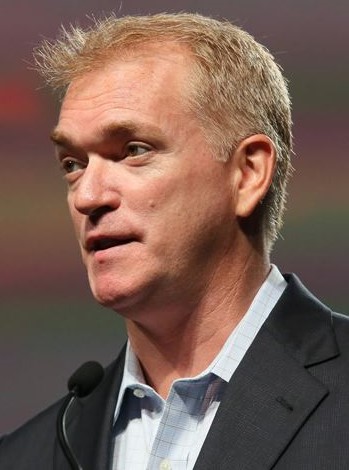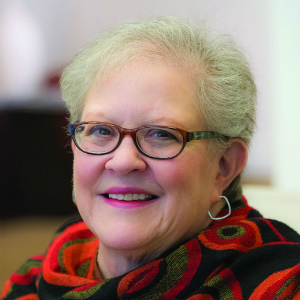“Pivot to virtual” has been the phrase most often used by groups considering a move of their meetings from physical (also called “face to face,” “f2f” or “live”) to meetings held via any number of platforms that allow virtual participation. In some cases, this is referred to as “hybrid” meetings: Those with some physical audience/s and also audiences joining virtually.
But I think too few planners and groups are asking the right questions about the pivot to virtual, and even fewer speakers.
I asked three people I know who I thought would provide helpful insights as we all look at how to make virtual meetings more engaging. Neither Meetings Today nor I are endorsing the books, speakers or services these three offer. They simply are people I can trust to provide honest and helpful information.
I consider John Chen (whose book, Engaging Virtual Meetings, published by John Wiley & Sons, will be out in fall of 2020), the guru of virtual engagement. (Really, he’s a guru of engagement with others, no matter the format!) You can pre-order a signed copy that includes one hour of training for $29.99 at geoteaming.com/evm. You can also pre-order from your local bookstore or Amazon.
Pegine Echevarria, MSW, CSP, CVP, was the only speaker who responded to my question in a Facebook group about what speakers needed/wanted for any meetings held while COVID-19 was still active. I knew she’d provide insights that would help as we look forward to physically meeting and keeping ourselves, the meeting participants, vendors, venues and speakers safe.
John Truran, senior VP, Keppler Speakers, was included because many people are looking to speakers bureaus to determine which of their speakers has experience delivering virtually. He was gracious to re-answer questions after we talked and I had a different idea of what he could contribute. [Disclosure: I once did consulting for his company; it’s been a number of years since we worked together.]
I am grateful to all three colleagues for their time to respond and help us as we look at what meetings and delivery of information will be during COVID-19 and in the future. The need for engagement and safety will not change once there’s a vaccine.
Note: I have distinguished two people who share a first name by including their last in the responses.
The editors and I have edited for length and clarity and if in so doing, we have changed the meaning of anything said by the three people interviewed, we apologize.
 John Chen, CEO, Geoteaming | john@geoteaming.com | geoteaming.com
John Chen, CEO, Geoteaming | john@geoteaming.com | geoteaming.com
John, a recognized thought-leader on engaging virtual meetings, founded Geoteaming 23 years ago. He is the John Wiley and Sons author of Engaging Virtual Meetings, due out in fall 2020, and a top-selling business book, 50 Digital Team Building Games. John’s clients learn from his more than 35 years of virtual meeting experience, work that has won him multiple awards. More than 230,000 clients across the U.S. and in countries including Spain, France and Taiwan have experienced breakthrough results through John’s leadership and guidance.
Joan: For all of us who conduct training, facilitate learning, or in some way facilitate group and individual learning, developing the skills to do so virtually for maximum engagement—for all people, including those who have hearing or sight or comprehension needs—is a new challenge. There are lots of platforms that can be used for groups that were to meet physically, and now, because of COVID-19 safety considerations, are meeting or going to meet virtually. Have at it and tell us how to best evaluate, and add maybe three to five questions to ask of speakers a group engages for their “pivot to virtual” events.
John Chen: If I were to choose a speaker for a conference I was in charge of, I would:
1. Don’t ask, show me! I would definitely have the speaker deliver five minutes of content to me and my committee. During those five minutes, you can evaluate 80% of how the speaker is going to do with your audience.
Look and listen for:
2. Pre-talk: What are you going to do before you speak? If they say nothing, then say thank you and go to your next speaker. Also, a top speaker will ask at least for the following items:
- What is the goal of your conference and this keynote or session?
- What’s the one thing you want the audience to remember or learn?
- How many attendees will there be?
- What is your virtual platform?
- Who is introducing me?
- Who am I handing off too?
- How can I best engage this audience?
- When is the dry run?
3. Good looks: How does this speaker’s virtual presence look? Do they have good lighting? Do they have a professional background? Are they framed correctly in the video or virtual presentation? Is the camera too high or too low? Good looks includes good sounds. Are they using a professional mic? Are they loud enough? Do they have a good presence? Do they sound tinny or do they have good bass?
4. Good technology: How does this speaker handle their technology? Do they start talking when muted? Do they share information effectively? Do they know techniques to maximize their impact such as do they use polling effectively? Do they have a team when they are speaking? Does the speaker come with chat monitors? Does your speaker come with a virtual producer who handles things such as spotlighting, muting and unmuting attendees and the chat room?
5. Good speaker: After experiencing the above, you can get to the core of how the speaker impacts your audience. Do they command the virtual stage? Bring energy or passion or knowledge for the subject? Create eye contact by looking into the camera (thus looking at your attendees) at the right moments? Does the speaker draw you in or do you find yourself looking for email or at your phone? How does this speaker reach out to all of your attendees? How do they handle issues of race, gender, inclusivity, accessibility and more?
6. Do they deliver?: As with all speakers and education, how did the speaker deliver on the goal that you set for them? Were you engaged? Did you learn something new? Are you inspired enough to do something different?
Joan: Planners and groups who often already “shop speakers” by price now expect speakers who speak virtually to charge less. Instead of price, what are the greater considerations to ensure delivery of engaging content?
John Chen: More, now than ever, you get what you pay for. I’ve been a member of the meetings community for over 23 years now. I now know that 60%-95% of your budget used to go to travel, hotel and food and beverage. Less than 5% goes to program and speakers fees. I’m a member of the MPI Washington State Chapter. I was shocked (in a good way) when the MPI Cascadia Educational Conference Committee voted to increase the speaker budget. It was a commitment to what the conference was about: quality education. Guess what? The survey scores soared after this decision as even better speakers showed up, giving Cascadia the reputation of an international conference at a regional price.
Be bold, support your goals, spend more on your speakers. Spend more on your speakers who truly wow you AND meet your educational goals. Your attendees are getting two educations at the same time: 1.) quality content 2.) how to be an outstanding virtual speaker. Your conference should set the standard for virtual speakers and your attendees need to raise their standards when they choose.
Joan: What are the top five questions groups/planners should ask potential speakers or the bureaus that represent them, when considering engaging speakers in a time of heightened awareness of racial injustice and a time when people are in difficult situations (dealing with fear of getting or giving COVID-19, job loss, housing insecurity, etc.) to ensure content that’s inclusive and delivery formats need to be adaptable?
John Chen:
1.) “Will you share your LinkedIn and social media with me?” Scan these to learn who you speaker is and what they believe in to see if it aligns with your attendees.
2.) “In what ways does your presentation include all of our members?” Listen for what the speaker asks you about your audience. Listen for more open-ended questions that include a desire for knowledge of gender, gender identity, race, ethnicity, sexual orientation, nationality, abilities and other issues important to your members. A great example: I use closed captioning with my presentation to help those who are deaf or hard of hearing even if we’ve engaged an Interpreter. It increases comprehension for all participants.
3.) “In what way does your presentation address current issues?” This open-ended question can reveal if they are handling issues such as race, demonstrations, masks, sustainability, the environment and other current issues. It will also tell you if they have researched your audience!
4.) “What charities are you passionate about and why?” This should give you an idea about the causes a speaker is passionate about and usually those to which they donate time or resources.
5.) “What content do you have that will help our attendees who are facing difficult situations now?” A good example is that in a talk about engaging virtual meetings, I talk about how technology changed how you could be involved in a demonstration. Gamers on a streaming broadcast platform known as “Twitch” used technology where you could have two or more streams from people on the street and rebroadcast them on one screen. This way you could see what was happening from multiple angles in one place. They also had chat rooms that were giving a lot of up-to-the-second information. I specifically say whatever your position is on this demonstration, this is a very innovative use of technology. By doing that, I avoid any political controversary while using a current example of how to be engaging.
Joan: What did I not ask that you want to say about virtual engagement and finding or coaching the right people to do so based on one’s content needs?
John Chen: Find the people who have the REAL experience. When COVID-19 started, suddenly many people were suddenly virtual meeting planners and virtual speakers. A great question to ask is how long have you been speaking virtually? Can I see some examples?
 Pegine Echevarria, MSW, CSP, CVP | info@teampegine.com | TeamPegine.com
Pegine Echevarria, MSW, CSP, CVP | info@teampegine.com | TeamPegine.com
Pegine Echevarria is the founder of Power Women Worldwide and Team Pegine. She is the Creator of the Virtual Presenter of Excellence Certification because professional associates were struggling to find amazing virtual presenters. The certification requires speakers and presenters to be independently evaluated by a team of meeting professionals. Motivational Speaker Hall of Fame member, Pegine, known for her feisty, fearless, focused and fun programs on leadership and diversity, is one of 100 Thought Leaders in Diversity and Inclusion, according to the Society of Human Resource Management (SHRM).
Joan: In a discussion in a Facebook group for speakers about meetings, I wrote about concerns speakers would have for speaking at physical conferences while COVID-19 (or really any communicable disease) is active. You provided a few thoughts. Please add those and why they are concerns.
Pegine: The hospitality and meetings industry is concerned about the attendees; speakers are worried about their health and welfare. The preparation plans publicized never include the following:
- How are all microphones including lavalier mics cleaned and how often, especially during a presentation with multiple speakers?
- How is the backstage area or any “green room” cleaned and how often and by whom?
- How will organizers protect speakers during meet and greets? Will there be plexiglass walls between speakers and the audience? Will all be provided with hand sanitizers? Will there be a “guideline” for wearing of masks by all? For elbow bumps vs. handshakes? No hugging and kissing?
Joan: Tell us the challenges you as a speaker face now in deciding whether or not to accept speaking engagements where travel (by plane or train or even car) is involved. What goes into your decision process?
Pegine: Thinking how this will impact me, my family and how my values match with the group and their mission are the key drivers of the decision-making process. Also, is it worth it; that is, is the fee they will pay reasonable and will my expenses be paid, or are people looking for deals because they think they can?
Questions on speakers’ minds include:
Can I offer the same message virtually as in the audience? Is the event using IMAG? If so, everyone in the audience looks at the IMAG, not the speaker on stage. Can a compelling virtual presentation be used instead?
1. Will this impact my family? Do I have children at home? Am I living with someone who is at high risk? Am I the caretaker for older parents? Will this prevent me from seeing my grandchildren? With Covid-19, if I am around a large group of people, I will have to self-isolate for 14 days to be in the all-clear. Can I afford to do that— emotionally, spiritually, relationship-wise?
2. What is the emotional cost of stress on me? Traveling in an airplane wearing a and gloves to protect me causes stress. Is this worth it?
3. Does this meeting align with my values? Does the organization value their employees or audience? Why are they having live conferences? Is it ego-driven?
4. Will physical distancing measures be used? How will I need to modify my presentation style? Will I be able to do facilitated, engaging interactions? What can’t I do? What can I do? Will I be required to wear a mask when presenting or otherwise interacting?
5. Fee wise, is this a hazard fee moment? If they want me to be there physically, this is a hazard to my health and family welfare. Does their budget cover hazard fees?
Joan: What are the top five questions groups/planners should ask potential speakers (That is, those who have not spoken to their groups before in any format) when considering engaging them in a time of heightened awareness of racial injustice and a time when people are in difficult situations (dealing with fear of getting or giving COVID, job loss, housing insecurity, etc.) when content that’s inclusive and delivery formats are changing?
Pegine: To ensure that organizations are protected and able to stand behind their speaker choice, I suggest.
- Are they a Power Women Worldwide Certified Virtual Presenter of Excellence? We have vetted the presenters; we have watched them in action and have done a social media search; they must be inclusive in their online presence.
- Does their social media communicate empathy to the world at large? Our audiences have a myriad of challenges and presenters must be sensitive. Empathetic meeting professionals need to take a quick look at social media postings of their speakers of choice.
- Are they the “real deal?” What you get off-camera is as important as what is happening on camera. You don’t want to be surprised. A quick assessment will tell you who they are as a human being.
- Does the speaker use inclusive photos? If they don’t know what that means, be aware they may not be the best choice. You don’t want your empowered audience to have a reason to complain. Ask to see a copy of a past presentation to see the images they use.
- What is your philosophy regarding story and joke selection? This is an important question. You want to know if they are thinking about the make-up of your diverse audience.
Joan: What is a speaker’s role in guiding content for the intended audience?
Pegine: I’ve been in this business for 30-plus years. Not all audiences are the same. Being human is not a good enough answer that dismisses the experiences of the people in the audience, especially a demographically diverse audience. You have to know how to relate to them—customizing photos to make them relatable, ensuring that you look at ALL the people finding individuals who don’t look like you. Practice speaking to groups that are not your norm—Black groups, and youth groups expand your experience—so you are prepared. Don’t be comfortable; be interested.
Joan: What five questions should planners ask potential speakers (those who may or may not have spoken to their groups previously) when being asked to present virtually?
Pegine:
- Who has engaged you to speak virtually in the past?
- Do you have testimonials of your VIRTUAL presentations? May I contact them? (Then follow up!)
- Will you share with us a recording of a variety of your virtual presentations? (You want a real virtual presentation, not videos of live presentations.)
- Are you a certified virtual presenter, and by whom? What did that entail?
- Please show us how you engage your audience members when presenting virtually.
Joan: Finally, what are the challenges speakers used to speaking to physical audiences face when addressing audiences virtually, and how best can they overcome those challenges?
Pegine: One of the biggest challenges speakers face virtually is not “feeling” the energy of the audience. Many speakers feed off the energy of a live audience. They falter when they don’t see the reactions or hear the laughter or see the tears. They are uncomfortable talking to a camera.
The best example is how late-night TV hosts struggled with they began doing their programs from home. They didn’t know how to work the audience. Now you see them months later more comfortable and understanding how to engage the audience, use the camera, and be confident.
The same goes for speakers; most speakers don’t practice enough VIRTUALLY. Speakers often assume virtual presenting is the same process as it is at a physical meeting. It is not. You have to use your face, eyes and energy differently. You have to ensure that you are creating an environment VIRTUALLY that feeds off the VIRTUAL platform. It is a skill that must be nurtured.
John Truran, Sr. Vice President, Keppler Speakers | jtruran@kepplerspeakers.com | kepplerspeakers.com
 Keppler Speakers is one of the top speaker agencies in the world. It provides clients with speakers from the worlds of business, world affairs, politics, entertainment, education, literature, sports and leadership. By focusing on real people with real stories to tell, Keppler can help bring an event—whether virtual or face to face—to life.
Keppler Speakers is one of the top speaker agencies in the world. It provides clients with speakers from the worlds of business, world affairs, politics, entertainment, education, literature, sports and leadership. By focusing on real people with real stories to tell, Keppler can help bring an event—whether virtual or face to face—to life.
Joan: In a interaction in a Facebook group for speakers about meetings, there was a discussion about what speakers should be concerned about (mic sterilization, guest room seclusion, guidelines for participants and speakers for masks, shaking hands, hugging, etc.) in considering booking physical speaking engagements, what are the kinds of questions Keppler’s speakers are asking about the engagements when deciding whether to accept future engagements for physical (“in person”) meetings?
John Truran: Just like the average meeting attendee, keynote speakers are also concerned about their health and safety when making business travel decisions. When a speaker is on stage, they are likely to be socially distanced from their audience. However, speakers and organizations are cutting back on the social aspects of their events. For speakers, that would include activities such as book signings or receptions.
Joan: Planners and groups who often already “shopped speakers” by price now expect speakers who speak virtually to charge far less. Why is that expectation, despite no travel and hotel room night expenses, one that needs to be dispelled, since preparing and presenting are still a factor?
John Truran: The length of time a speaker spends prepping for a virtual keynote is in many ways more time-consuming than at a face-to-face event. There are likely to be more prep calls between the speaker and event organizers for virtual events. Speakers need to invest more time customizing their messages. And in general it is a newer medium for most presenters, which requires more rehearsal time.
So, while travel time is not a factor, I would suggest that when you consider the additional prep time required for virtual presentations, especially those that are live, it is essentially the same.
What has really put downward pressure on speaker fees in this environment is simply a function of supply and demand. Since the COVID-19 pandemic began, there is now an exponentially lower number of events that require keynote speakers. However, the supply of speakers has not changed.
Speakers bureaus are not like OPEC, where we can just turn down the spigot to regulate the speaker supply to maintain the status quo on fees. There’s simply a glut of keynote speakers in the market right now.
Joan: What are the top five questions groups/planners should ask potential speakers, or the bureaus that represent them, when considering engaging speakers in a time of heightened awareness of racial injustice and a time when people are in difficult situations (dealing with the fear of getting or giving COVID, job loss, housing insecurity, etc.) to ensure content that’s inclusive and delivery formats that are adaptable? Tell us more about the speakers you represent who specifically address social justice/racial inequality issues.
John Truran: I think the business events industry is starting to do a better job at policing itself by showing more diversity on the main stage. The era of “manels” (aka, all male panels) seems to be over. Now most major events desire to feature a more diverse speaker lineup. The events over the past few weeks [since the Black Lives Matter demonstrations began this time] will most certainly reinforce that commitment to diversity at business events.
At Keppler, we’re fortunate to have always represented an exciting and diverse roster of speakers. On the subjects of social justice and corporate diversity, we are fortunate to represent many leading voices for change. They include the founders of the Black Lives Matter movement, Patrisse Cullors and Alicia Garza; former NAACP President Benjamin Jealous; former U.S. Attorney General Loretta Lynch; journalist and Black in America producer Soledad O’Brien; and former NPR host Michele Norris. You can learn more here.
Joan: Your company is providing a platform that shows how to engage speakers virtually in an interview format. I heard General Russel Honoré, “the Katrina General,” and was so engaged in listening to him, wishing I were there to ask more! Tell us how in other ways we as planners can preview how a speaker would present to a virtual audience.
John Truran: We started hosting a series of virtual interviews with many of our more popular speakers in April 2020. We realized that most of us in the events community were in a state of shock and we began offering these interviews as a professional development tool for the community. We branded them as “Keppler Coffee Breaks.”
They’ve grown in popularity and have given event organizers an opportunity to hear from a number of popular speakers in a virtual format. We’ve even had a few customers replicate the program for their own companies. They are a great way for planners to preview how a speaker will communicate in a virtual environment, and you might learn a thing or two.
Joan: You and I talked recently about the need groups, especially associations, have to train their speakers to engage virtually, since many are subject matter experts (SMEs) used to presenting data from a stage or front of the room. Virtually, it’s very different even than a webinar. Tell our readers what you told me about one of the speakers with whom you work and how he uses different media to engage the audiences. I thought from him and how he presents, planners can learn to help their speakers engage.
John Truran: That speaker is Brett Culp. He’s a documentary filmmaker whose first foray into the speaking business was making promotional videos for speakers. Brett is a fantastic inspirational speaker on the live stage—he’s this strange mix of Mister Rogers meets Gary Vaynerchuck (without the F bombs!).
But when the industry suddenly went virtual, Brett had all of the tools for a great virtual presentation at his disposal. He knows how to intersperse video, has a great message for these times, and really hustled to put together a great keynote offering for these times.
Brett is also working with other speakers and organizations to train and coach their leaders to be more effective in the virtual environment. From equipment to lighting to video—he’s ready to make your team shine!
Joan: Last—I promise! Tell us the three top considerations for groups to consider when deciding whether to have audience engagement virtually and when not to. I know you mentioned size of audience as one. Is having a moderator help with the questions so the speaker doesn’t have to watch the screen helpful? What else?
John Truran:
- Use a moderator ALWAYS! Much like you may have an emcee at a live event, a moderator or facilitator for virtual is a must-have in terms of giving the audience a comfort level and explaining the format and rules of engagement for the virtual session.
- Audience size is a factor. With a smaller audience, perhaps less than 100, allowing the attendee turn on their mic and camera to ask a question is a great way to build audience interaction. But for a larger event that can become cumbersome.
- Polling and quizzes are also a great way to engage the audience virtually. There are a number of web tools that allow for immediate scoring, and using them lends an immediacy to the messaging of the speaker.







